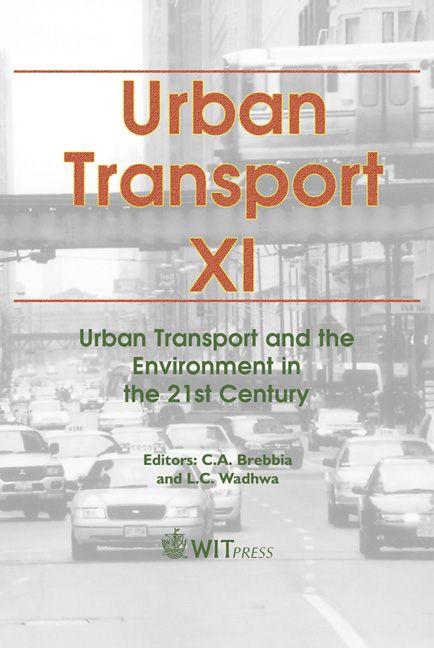Strategy For Passengers’ Transport Effectiveness And Competitiveness: Multimodality For Rio De Janeiro Metropolis
Price
Free (open access)
Transaction
Volume
77
Pages
10
Published
2005
Size
810 kb
Paper DOI
10.2495/UT050171
Copyright
WIT Press
Author(s)
J. A. Martins & M. Bodmer
Abstract
The focus of this paper is an analysis of one of the main transport corridors between Rio de Janeiro (the main centrality), Niterói (second metropolitan centrality) and São Gonçalo (one of the biggest suburban areas). The metropolitan area of Rio de Janeiro, with its residential sprawl and concentration of economic activities in the central district, induced the radio concentric transportation infrastructure and led to its ineffective use. The main bus transit has been facing a perspective of rising operational and environmental costs, given saturated physical capacity of Rio-Niterói Bridge situated on Guanabara Bay. There is also a lack of transport planning policy oriented to sustainable urban development. The National Bank for Economic and Social Development has supported two studies aimed to develop transport alternatives for this corridor. The first one has proposed a rapid Metro line, and second one, with the goal of urban restructuring, has resulted in a multimodal alternative, called Acqua Ro-Ro, catamarans and embarked vehicles—roll-on/roll-off—exclusive for buses already existing within the formal public transport system, which attend connections crossing the Guanabara Bay. This alternative contributes to the competitiveness of the bus system and demands 10% of the investments estimated for the Metro construction. There are also positive environmental impacts and reduced institutional constraints, making this alternative more attractive. Keywords: travel behavior, choice simulation, transport alternatives, water transport, multimodality.
Keywords
travel behavior, choice simulation, transport alternatives, water transport, multimodality.





